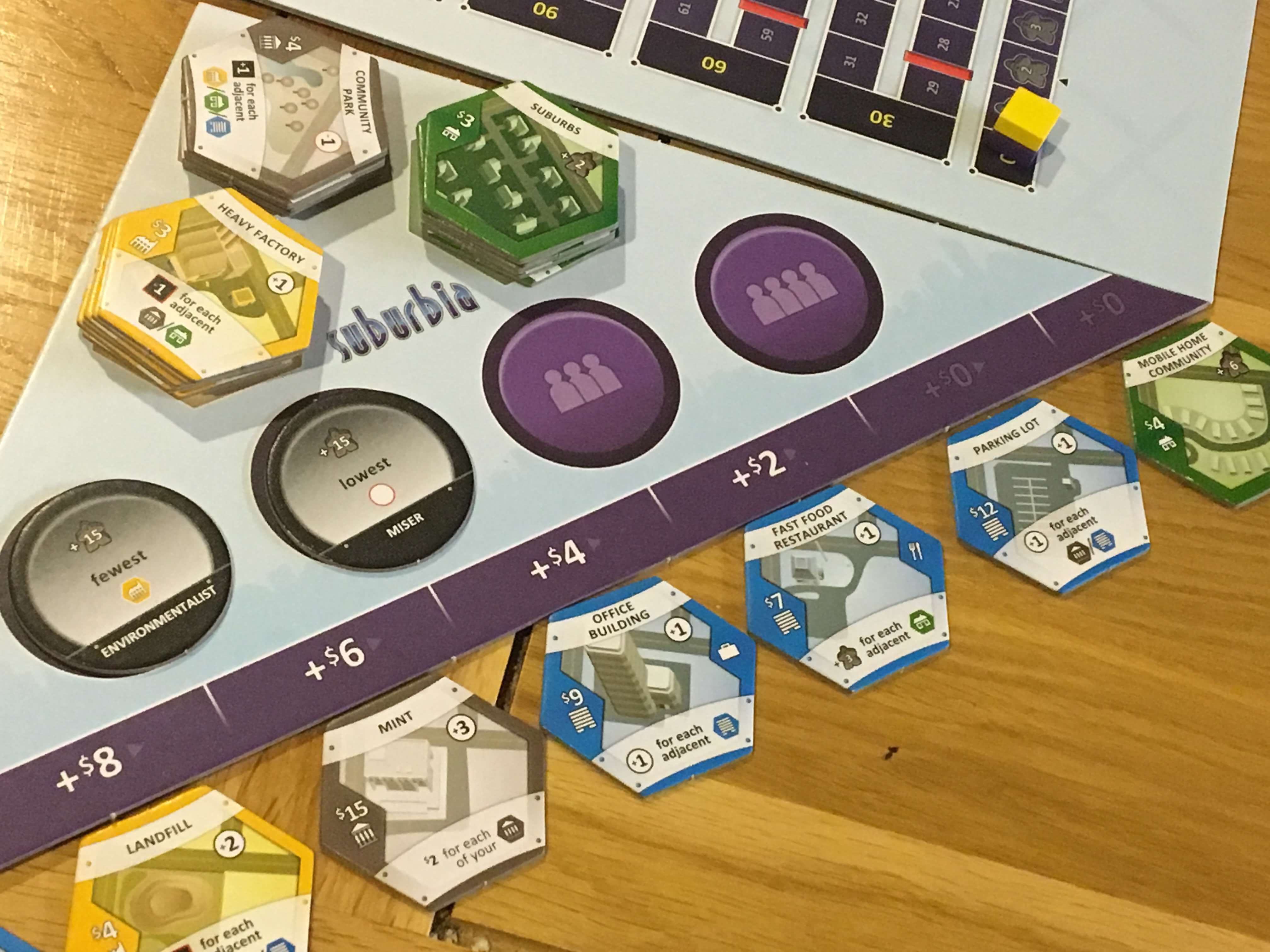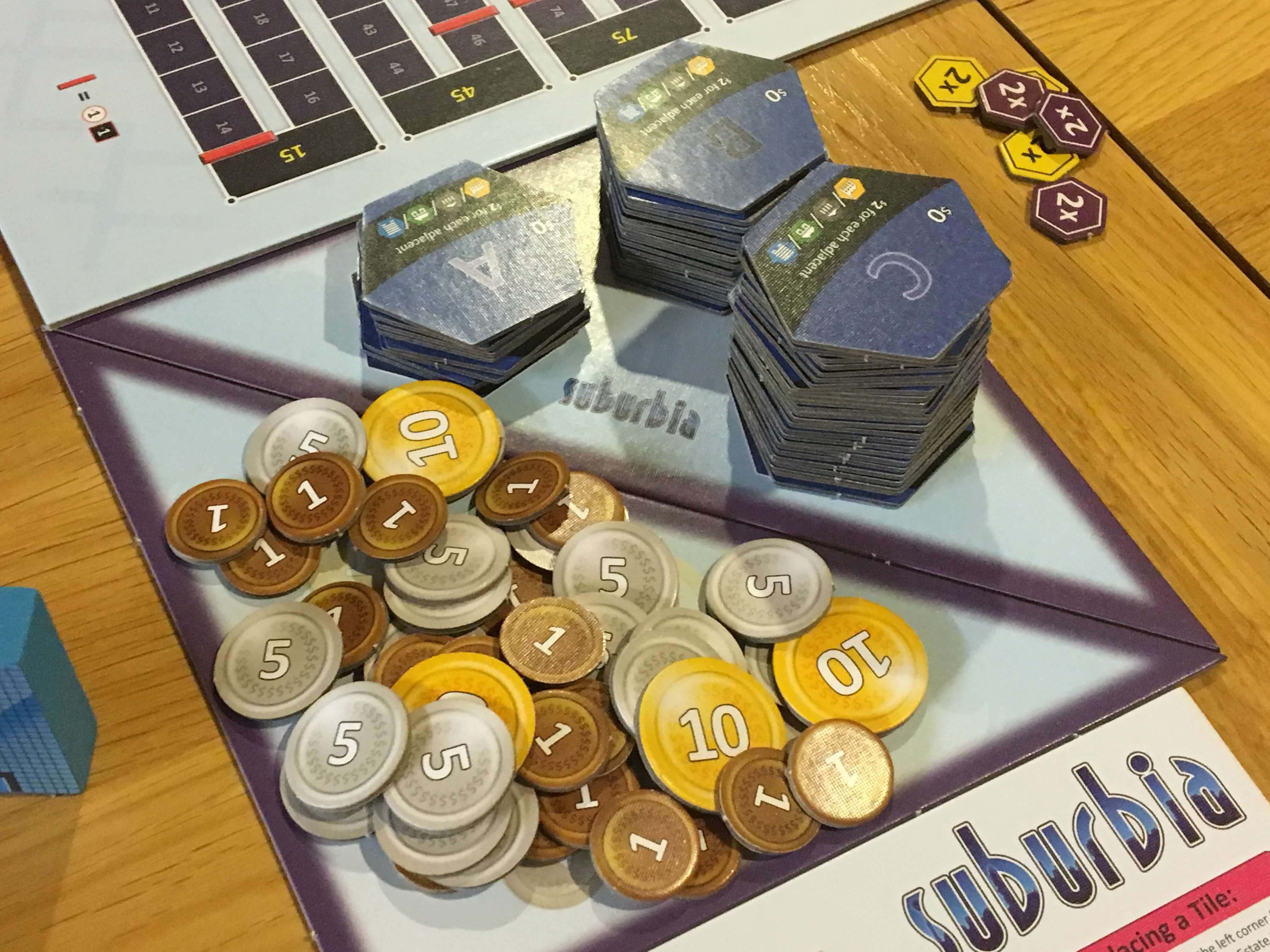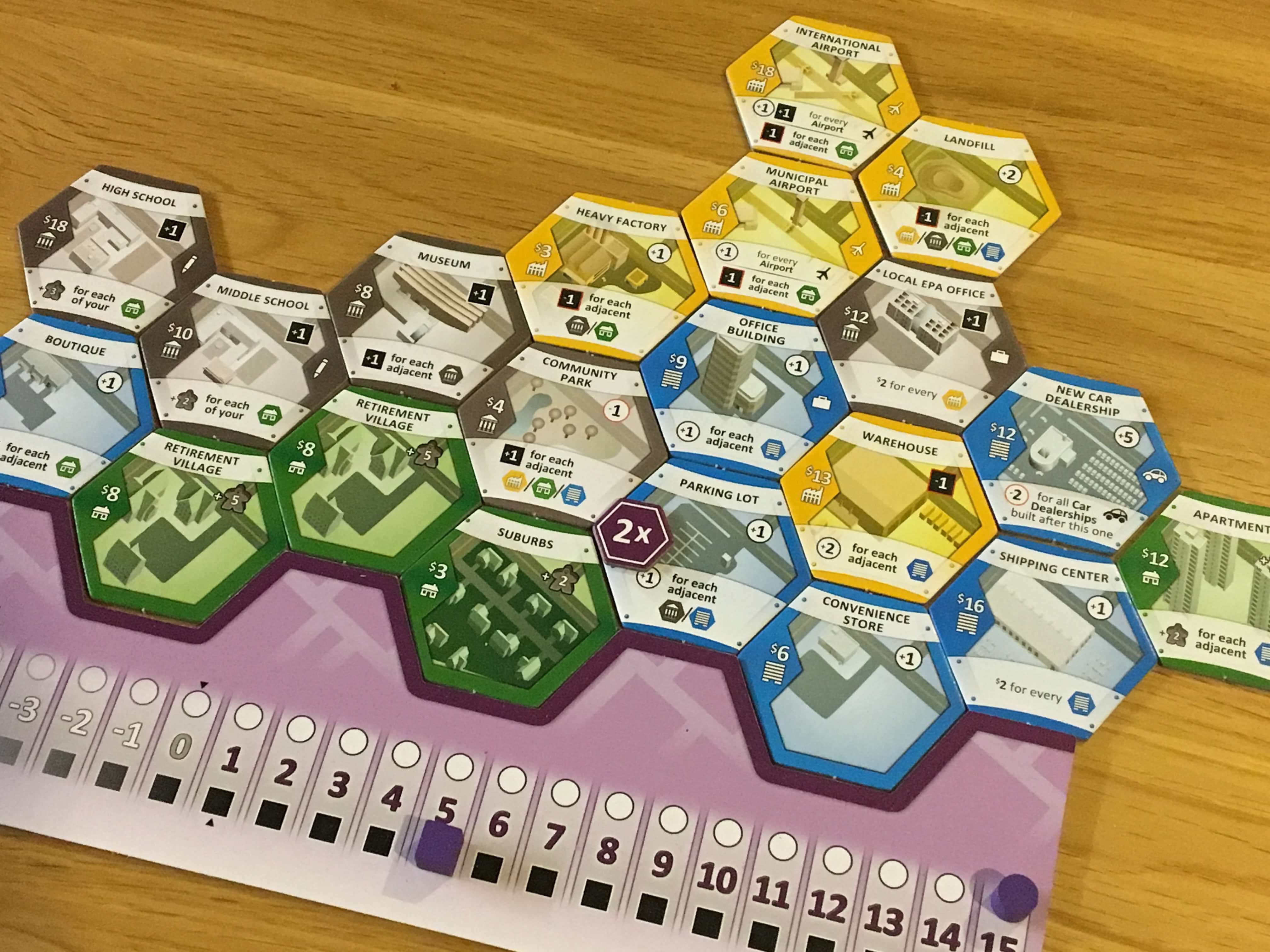Suburbia review — Bright lights, big city
Race to build the most efficient and well-organised city in Suburbia, an old classic which continues to give and give even after 6 years.
![]()
- I find that one of the most enjoyable concepts in video games is that of building up your own city. From Simcity to Cities: Skylines and even recently into space, thanks to games like Surviving Mars, there’s nothing more satisfying than planning and laying out streets and buildings, then watching them fill with people. On the tabletop, few games capture this same feeling to the extent that Ted Alspach’s classic Suburbia does. Even at over six years old, Suburbia remains a firm favourite — let’s talk about why.
Overview
Whilst it remains more or less impossible for a board game to replicate the scope and expansiveness of a game like Simcity, Suburbia is nonetheless one of the more ambitious board games that I’ve seen. Each player takes control of their own borough, and from a humble beginning — featuring just three of the basic building tiles — must increase their income and reputation tracks to bring in people and wealth so that the cycle can be repeated.
Population level is the equivalent of victory points in Suburbia and a separate board is used to track current score. Depending on your reputation, this score can go down as well as up — so balancing reputation and monetary income at different stages of the game is key. Both of these tracks are affected by how tiles are placed in your city, with things like parks and pleasant spaces increasing reputation and unpleasant things like dumps or airports potentially decreasing it, whilst usually adding income.
Suburbia is not a black and white game however, and choosing which buildings to invest in and place into your city, as well as where to place them, is absolutely key. As the game continues on, the bonuses for certain buildings become more and more powerful, but so too do the possible negative consequences of placing buildings in suboptimal locations. As the lines between housing, industrial and commercial districts become more and more blurred, the players will need to keep a close eye on changes to the scoring tracks, which also become more complex.
Ultimately the winner will be determined once the final round has been played and scored. The borough with the highest score will win, but this isn’t only down to population. Each player also has their own secret objective that will be worth a certain amount of points, and there will also be at least two public objectives to score against. Each objective is worth about ten percent of an average score, so taking one or two of them can often swing the game in your favour.

Components
Where the components in Suburbia are concerned, I guess you might say that the design is showing its age a little bit, but it is nonetheless entirely functional. There are several cardboard components, the most prominent of which are the building hex tiles and the player boards that form the basis of each borough. Aside from having fairly dull rear sides, the building tiles are well made and very clear. It’s more or less impossible to misinterpret the information that each one provides thanks to clear, well placed iconography. The player board that the opening city tiles slot into is a bit ugly, but it’s a useful way of making the building tiles fit snugly together in a way that prevents them being knocked around the table.
Other components like the score track and the slightly odd triangle piece that tracks the current building marketplace and any public objectives are also a bit dull to look at, but they do their job. The fairly prominent 1950’s inspired artwork that features on the box isn’t seen anywhere within the actual game and I think if an alternative print run was made now, it might well appear on these two boards to enliven the game a little bit. Money is represented by circular coins in various denominations — the printing is unexciting, but clearly colour-coded by value.
There’s little else to mention really. The tracks for reputation and income are made of a thin card and use wooden pieces that are easily knocked, which is a shame. More than once I played games that ended acrimoniously with some debate about whether a player had ten reputation or eight. The nature of scoring in Suburbia is such that attempting to rebuild this from the board start can be very, very hard towards the end. I’d love to see deluxe player aids with indented slots for tracking these things in the future.
The instruction manual (which is perhaps the most important thing when dealing with a complex game like this) is very good and clearly articulates the set up conditions for different player counts, as well as how to play the game. It’s well laid out and uses clear language, so even though there are now many tutorial videos available, you absolutely don’t need them if you study the manual over about ten to fifteen minutes.

Turn structure
Each game of Suburbia plays out in several stages, with stacks of buildings placed face down with A, B and C listed on them. The stacks are made larger based on higher player counts and an end of game tile is seeded into the bottom few tiles of the C stack. Tiles are drawn from whichever stack is currently active (first A, then B, then C) and placed onto a public display that shows a cost — the newer the tile, the more it costs. As players buy tiles and place them, the others slide down so that each player always has a full complement to choose from.
Each round, the first player (marked by a wooden skyscraper that comes in the box) will choose to buy one of the buildings in the display, which they will do by paying the cost on the building plus the cost on the building display. If they don’t wish to buy any building here (or can’t) then they can buy one of the standard buildings — a park, factory or suburb, each of which have a very low cost but provide little benefit on their own. It’s also possible to place one of these tiles upside down as a lake, which can increase the value of other tiles, such as the marina.
Once a tile has been taken from either the display or the stacks of common choices, the building display must be refreshed. When a tile was taken from it, this is a simple case of sliding the other tiles down and then adding one from the current stack. Where a player chooses to take a common building, then she must also choose one from the display to discard, which ensures that the game keeps moving forwards and prevents any situations where the game might stall because no one can afford to progress.
Regardless of where the building came from, it must be added to the borough of the player who drew it. Almost all buildings in Suburbia have relationships with other buildings that affect how they score. This can be as simple as a loss or gain of reputation for placing industry next to a suburb, or placing a park somewhere beneficial. It can also be more complex, such as when airports are placed, because the benefit they provide can be relevant to the number of airports either in your own borough or indeed across all boroughs (including those controlled by other players.)
With changes to reputation, income and scoring tracks done, the player scores their turn and takes their earnings based on these tracks — this ensures that everyone knows what they will have to work with on their next turn. The next player then repeats the process until everyone has had one turn. The first player marker then moves on and the process is repeated until the endgame tile is revealed, at which point a final round is taken and scored and the game ends.

Game experience
Whilst I may not consider Suburbia to be the most beautiful game I’ve ever played, it is a real testament to how good it is that, even after six years, it feels every bit as tight and relevant today as it did when it won the Mensa Select award back in 2013. The bits that have aged badly (component quality and scoring complexity) pale in comparison to the fast, simple pace of the gameplay that juxtaposes incredibly well with the powerful and complex potential board states that players can build towards.
I haven’t played every city building board game by any stretch of the imagination, but of those I have played, none come as close to Suburbia when it comes to giving players the feeling of building a living, growing city. Whilst Suburbia itself was clearly influenced by video games like Simcity, it’s also interesting to see how its own legacy has carried into some of the most popular modern board games. Take Terraforming Mars, for example, which clearly uses the same method of tracking various forms of production via tracks that are very similar to the income and reputation tracks in Suburbia.
Even though turns flow rapidly with little downtime, there is the potential for some analysis paralysis due to the complexity of scoring. As a result, whilst Suburbia is very simple to teach and to play, it can be difficult to master. Some players might find that there’s a bit too much pressure to keep up with the pack leaders. It’s also worth noting that there is essentially no interaction whatsoever in Suburbia, meaning that it boils down to players each solving their own individual puzzle.

Conclusion
In conclusion, I am a huge fan of Suburbia and it is most certainly set to remain a long term feature on my gaming shelf. You may recall that last year, I also reviewed Quadropolis and whilst I also loved it, I think that Suburbia is a more “serious” proposition that certainly appeals to my love of heavier games. Even so, I’ll be keeping Quadropolis close to hand as well, simply because the two games are very fundamentally different – Quadropolis feels fairly abstract, whereas in Suburbia you will actually build a living, thriving city… Or not.
It’s this ability to create something different each and every time you play that I really love about Suburbia. There’s a puzzle here that changes based on the tiles that come out early, and that puzzle becomes your city. You can go into each game with a specific plan to execute against, but Suburbia has a way of forcing players to react and adapt, much as I guess city planners must do in reality. For capturing the feeling of Simcity in a fast, straightforward and deeply engaging way, I wholeheartedly recommend Suburbia.
A copy of Suburbia was provided for review purposes. You can find out more about it on the website of publisher Bezier Games.

Comments are closed.